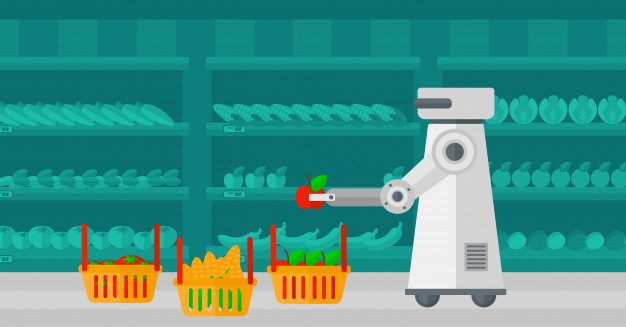Grocery stores built up their e-commerce order and delivery infrastructure in the last couple of years to target an untapped consumer market. In the U.S., only about 2% of the $700 billion in grocery market sales came from online sales. Then the COVID-19-induced shutdown brought an avalanche of online orders for U.S. grocers, a surge that will level off, but still find many consumers staying with their online ordering habits.
Trouble is that grocers’ razor-thin margins get eaten up by the costs of fulfilling the e-commerce orders. National grocers, including Ahold Delhaize, Albertsons, Kroger, Walmart, and Whole Foods, have made major investments in warehouse technology and delivery network resources to make online order fulfillment more efficient and cost effective. Delivery partners Instacart, Peapod, and Shipt have hired a few hundred thousand shoppers to select grocery items and deliver to customers.
This may not be enough to make online grocery delivery profitable, but it’s an on-demand service that’s here to stay. Curbside pickup, which has also become popular with consumers, will be a way for grocers to relieve the financial costs of last mile delivery. The following Wall Street Journal article, which is excerpted below, reports more on the topic:
Grocers charged into delivery to meet a surge in demand sparked by the coronavirus crisis, though many haven’t figured out how to get food to customers’ homes profitably and some wonder if they ever will.
Retailers have modified their operations to manage the jump in delivery demand, hiring thousands of additional workers and devoting some stores to fulfilling online orders. That work is pushing up costs that eat into the margins on delivery sales, echoing trouble restaurants have had in delivering food to customers while also trying to protect their bottom lines.
Grocers had been slower than other retailers to offer delivery because they had concluded that their customers preferred buying food in person. Coronavirus prompted a quick shift in strategy, as the pandemic did for other companies that were slow to embrace e-commerce.
Customers flocked to grocery delivery when the pandemic started, but many experienced cancellations, outages and delays. In response, Amazon.com Inc.’s Whole Foods Market converted six stores in New York, Chicago and other cities to delivery-only service, and Kroger Co. redeployed in-store employees to handle delivery and pickup.
Overview by Raymond Pucci, Director, Merchant Services at Mercator Advisory Group











